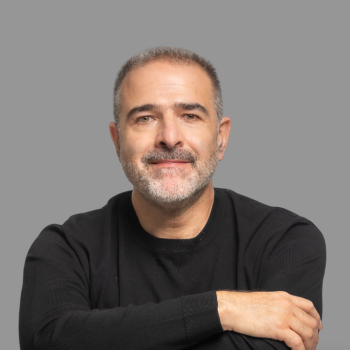The Smithsonian's National Portrait Gallery is hosting a thought-provoking show entitled "Hide/Seek: Difference and Desire in American Portraiture." The exhibit trains a spotlight on the suffering of homosexuals. Part of the exhibit is a video by celebrated artist David Wojnarowicz, entitled "Fire in My Belly," which portrays the artist's intense suffering as he died of AIDS. One of the images in the video is of a crucifix lying on the ground, covered in ants.
The image is not pretty and is likely to disturb one on first viewing, but that is obviously the artist's intent. He is jabbing the viewer to suffer at least some of the pain he has suffered with AIDS. The use of the cross is crucial, as he references the parallel themes of his suffering and Christianity—suffering before death; the forces of nature and the finitude of humanity; and the ugliness of death brought on by violence, or in Wojnarowicz's case, disease. It is masterful even if troubling.
Bill Donohue of the Catholic League, however, took quick action to lobby the Smithsonian to remove the video because of this one 11-second image. The Smithsonian quickly capitulated in the face of his pressure and pulled the video.
According to Donohue, such an image does not belong in the public square. No one insults or demeans the Catholic Church on his watch, and according to him, this was all about the Catholic Church. This is just a repeat of the episode with the images of Madonnas with elephant dung, by renowned artist Chris Ofili in the Brooklyn Museum. Donohue objected to that, too. A federal court held that New York's attempt to evict the Museum because of the images was a violation of the First Amendment. That was not a hard case. If the Smithsonian is sued, as it deserves, it will have just as many problems defending its actions.
"Art Speech," as I dubbed it in an article in the Vanderbilt Law Review in 1996, is crucial to liberty because of its capacity to beat back the overreaching powers. At that time, I focused on how art has the capacity to put government in its place. It is no less powerful in keeping religious entities from dominating or tyrannizing our culture. Cases like the Brooklyn Museum case, therefore, are straightforward.
One must ask, though, about the motivation of those like Donohue in seeking the suppression of speech. Few would assume that is part of the agenda of religious groups in the United States. But it is. Obviously, in Donohue's case, it is about keeping his client's image pure.
In what may seem like an unrelated event, Wikileaks released diplomatic documents this weekend that show the Vatican and its officials avoiding cooperation with the Irish Murphy Commission on clergy sex abuse. The primary complaint from the Holy See officials was that the Irish commission called on officials to testify in its proceedings without going through diplomatic channels. Translation: they invoked sovereignty to slow down and gum up the process.
And in an even less obviously related event, according to the New York Daily News, a Beth Din (Jewish religious court) last week ruled that the 10,000 Hasidic Jews in Crown Heights should not report crimes by fellow believers to the authorities, or the press.
What do all three of these events have in common? In each one, the religious group is primarily concerned about public image. The Catholic League/Smithsonian story obviously operates on this axis.
The Vatican story is more complex, but in the end, it is all about the ongoing efforts by the Vatican to protect the Church's image by erecting obstacles to investigations into child sex abuse by its clergy. The bishops seem to have an endless supply of legalistic arguments to avoid the truth and accountability. This was just one more.
The Lubavitchers are observing a strong strain in Orthodox Judaism that prohibits believers from telling the authorities about bad behavior within the organization. This is hardly new, but it is distressing to hear religious leaders forbidding cooperation with the authorities when we know as we do now that every religious group has issues involving child sex abuse and the other maladies of human existence.
The truth is that the Catholics cannot single-handedly control their image in the American public square, despite Donohue's efforts; the Vatican is going to be held accountable for creating the conditions for child sex abuse across the globe; and the Hasidim will not thrive if they choose to exist in the largest city in the United States as a wholly separate enclave.
Image cannot be all that religious groups care about, but these three events remind us that they are perfectly capable of putting image above art, liberty, and public accountability.
12/22/2010 5:00:00 AM





